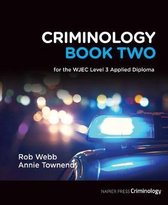Criminology unit 3
1.3 – Explain how evidence is processed
When evidence is collected, it must be processed in preparation to be analysed/examined in
order to advance a case and get closer to catching a perpetrator.
Locard’s exchange principle
Edmond Locard is a very prominent figure within forensic science and is responsible for
developing the ‘Locard’s exchange principle’. This principal suggests that every contact
leaves behind a trace. It states that within every crime scene there will be always be some
traces or incriminating material left behind by an offender, which can be found on the victim
and offender and used as evidence and linked to the crime committed.
Types of evidence
There are different types of evidence, they are primarily categorised as either physical
evidence or testimonial evidence.
Physical evidence is classed as actual material which you can see and touch. The police
officers which commonly arrive first at the crime scene have a responsibility to secure and
preserve this evidence to ensure that contamination is minimal in preparation for the arrival
of CSIs where they would collect the evidence correctly. Forensic specialists then analyse
physical evidence within a lab through the utilisation of specialised equipment. There are
many factors which could influence the collection of physical evidence if the crime scene is
outdoor, such as on the side of a street. This is because of variables such as weather and
animals. Examples of physical evidence would include: bodily fluids/tissues, fingerprints, gun
residue and fibre from clothing. In order for evidence to be processed safely and accurately,
there are necessary procedures which need to be followed.
Collecting, transferring and storing physical evidence
Blood
For example, a bodily fluid such as blood, would firstly be collected and packaged inside
polythene bags safely by CSIs from the crime scene itself. If the blood is still in liquid form
and not dried, then it should be obtained through a cotton pad and refrigerated in order to
preserve the DNA. After this blood will be transferred to a forensic lab in preparation for
analysis within 48 hours. This is because if it is not preserved properly and received at a lab
quick enough, the sample may not prove any use within an investigation. Blood should be
allowed to air dry at room temperature before examination. If blood is found on clothing,
then it is imperative that the piece of clothing remains unfolded, this is because if there are
any other blood stains on the clothing then the blood may transfer onto another stain,
resulting in contamination. Dried blood which may be hard to identify, can be found using a
chemical known as luminol, this is placed on surfaces or clothing. If blood is present, it will
be seen as a blue light.





